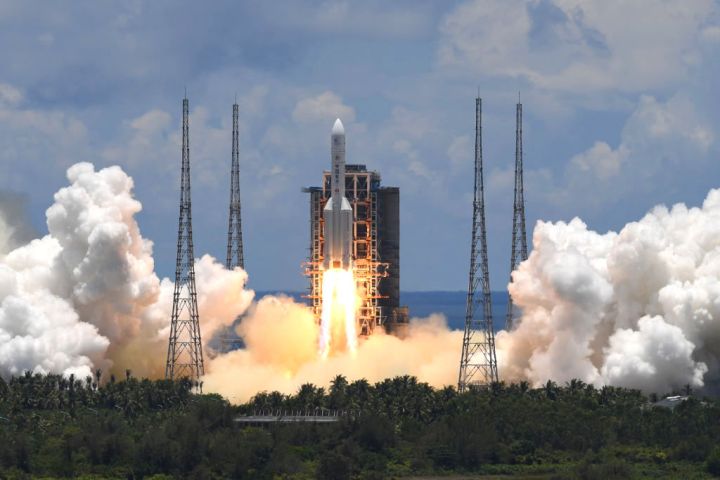
NASA’s Perseverance rover will soon have a new companion on the red planet, as China is set to send its first Mars rover to the planet’s surface as early as next month. The Tianwen-1 mission launched in July last year, arriving at Mars in February this year, and the spacecraft has already shared an image of Mars taken as it approached its destination. But the real challenge of the mission is still ahead, with the plan to land a rover on the planet in May or June.
China’s space agency, the China National Space Administration (CNSA), recently announced the name for the little machine which is set to become China’s first Mars rover. It will be called Zhurong, after a fire god from traditional Chinese legends.
The name was announced at the 2021 China Space Conference in Nanjing. The name was chosen to compliment the Chinese name for Mars, Huoxing, which means planet of fire.
“Naming China’s first Mars rover after the god of fire signifies igniting the flame of China’s planetary exploration,” said Wu Yanhua, deputy director of the CNSA, as reported by Chinese state media agency Xinhua. He also described how the name Zhurong is made up of the terms “Zhu,” meaning wish, and “Rong,” meaning cooperation, in the spirit of the peaceful exploration of space.
Landing a rover on Mars is extremely challenging, due to not only the thin atmosphere and variable wind and dust storms but also due to the communication delay between the planet and Earth. This means that rovers must land autonomously, without being guided in real time.
CNSA estimates that the landing process of Zhurong will take seven to eight minutes, in which the craft will make use of a parachute and retrorocket to slow its descent through the atmosphere and aim for a soft landing on the surface. The landing area in the southern region of Utopia Planitia, the largest impact basin on Mars, was explored by the NASA Viking 2 lander in the 1970s.
The Tianwen-1 mission aims to investigate this area to learn about the surface and sub-surface of the region, including its composition and the presence of water ice there.
Editors' Recommendations
- Final communications sent to the beloved Ingenuity Mars helicopter
- NASA’s damaged Ingenuity helicopter spotted in Mars rover photo
- NASA regains communications with Mars helicopter Ingenuity
- NASA’s Mars helicopter still working fine after month-long break
- The Curiosity rover reaches a milestone on Mars




